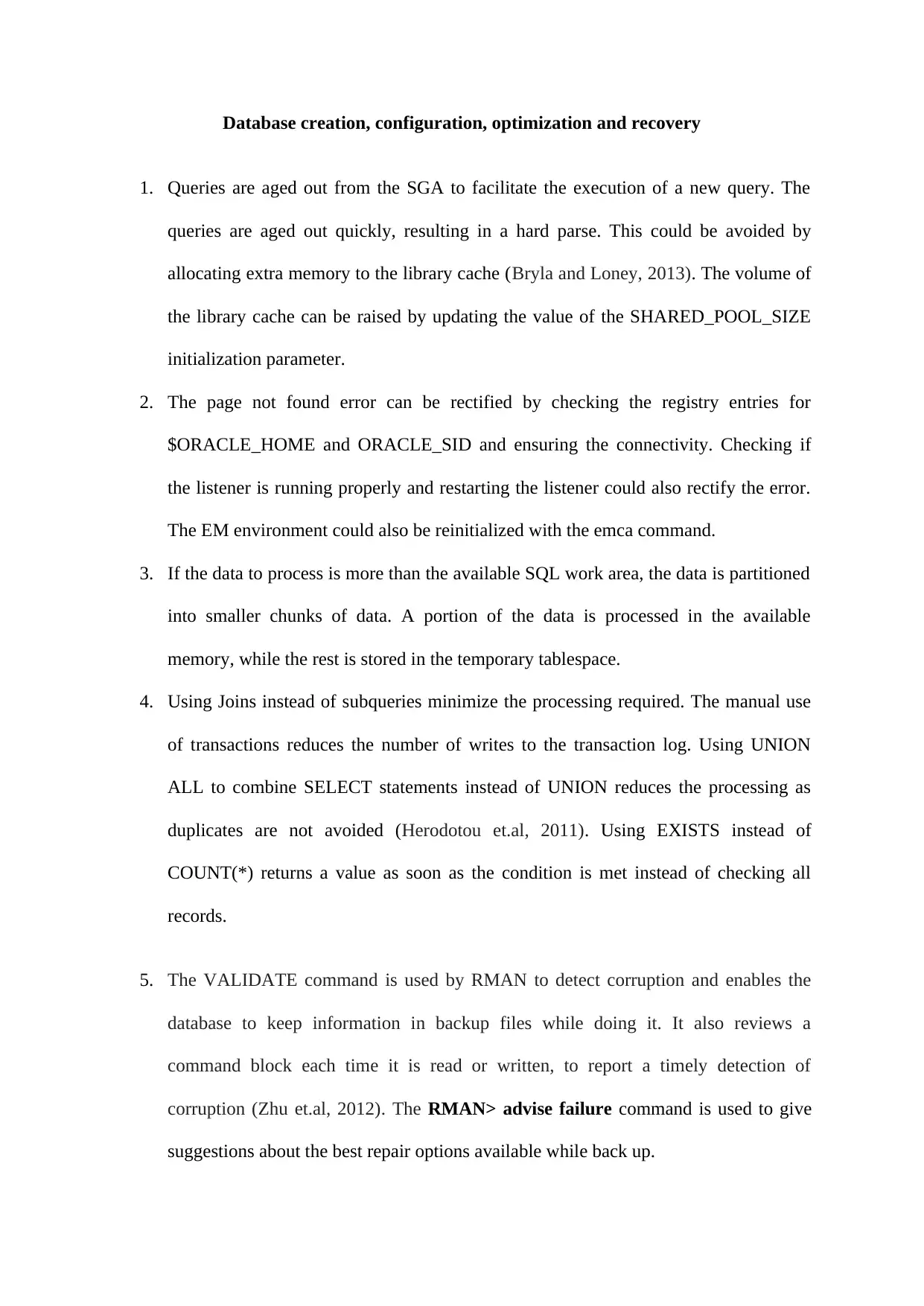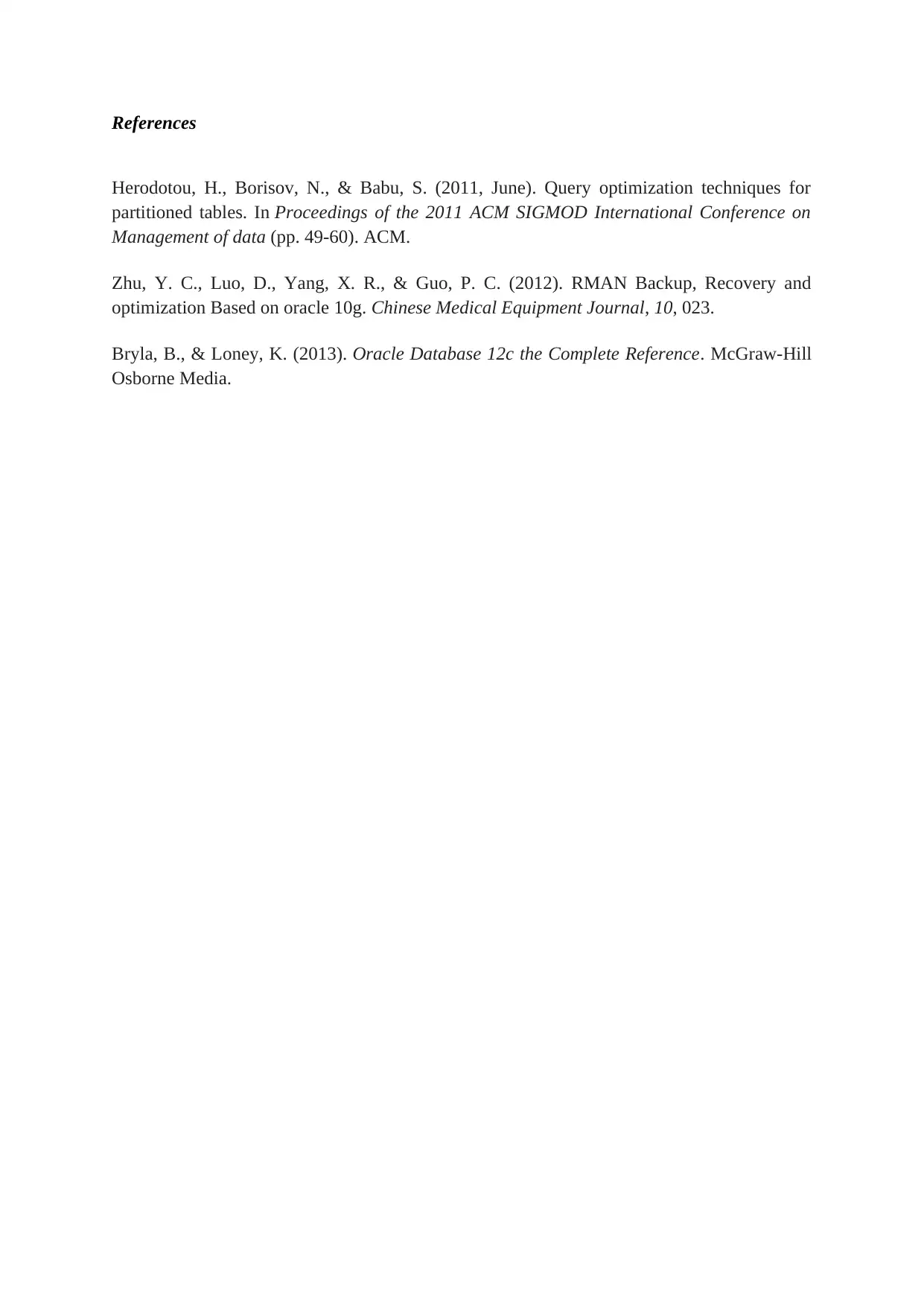Database Administration: Optimization and Recovery Techniques
VerifiedAdded on 2020/05/08
|3
|447
|55
Report
AI Summary
This report delves into key aspects of database administration, focusing on optimization, recovery, and performance tuning. It addresses issues such as query optimization, the use of the shared pool size, and the library cache. The report covers techniques to avoid hard parses, optimize SQL queries, and manage data partitioning. It also examines the use of RMAN for backup and recovery, including the VALIDATE command and the RMAN> advise failure command for providing repair options. Furthermore, the report highlights the significance of transaction management and the use of techniques like UNION ALL and EXISTS for improved performance. References to relevant research papers support the discussed concepts and techniques.
1 out of 3




![[object Object]](/_next/static/media/star-bottom.7253800d.svg)